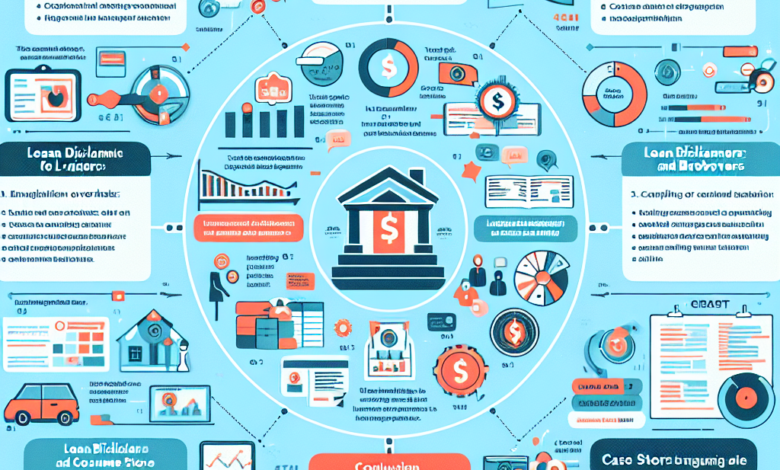loan disclaimers in the united states

Navigating the complex world of loans can be daunting, whether you’re a borrower or a lender. One crucial component of loan agreements that often doesn’t get the attention it deserves is the loan disclaimer. In this post, we’ll explore the role and importance of loan disclaimers in the United States, focusing on their impact on both lenders and borrowers. By understanding these disclaimers, you’ll be better equipped to handle loan negotiations, protect your rights, and ensure compliance with regulatory standards.
Throughout this article, we’ll cover essential topics such as the significance of loan disclaimers, the key regulations governing them in the U.S., common types of disclaimers you’ll encounter, best practices for crafting effective disclaimers, and their role in consumer protection. We’ll also look at real-world case studies and emerging trends shaping the future of loan disclaimers. Let’s get started!
Understanding Loan Disclaimers The Basics
Loan disclaimers are an integral part of any loan agreement. They serve as legal statements that outline specific conditions, limitations, and responsibilities associated with the loan. Essentially, these disclaimers are meant to protect both parties involved in the loan transaction by clarifying expectations and reducing potential misunderstandings.
For borrowers, understanding loan disclaimers is crucial as they provide insights into what you can expect during the loan term. They might include information on interest rates, repayment terms, fees, and any penalties for late payments. For lenders, disclaimers help mitigate risks by clearly defining the scope of their obligations and the borrower’s responsibilities.
Loan disclaimers play a pivotal role in ensuring that both parties are on the same page. By explicitly stating the terms and conditions, they help prevent disputes and legal issues in the future. Not having clear disclaimers can lead to significant financial and legal repercussions for both borrowers and lenders.
Importance of Loan Disclaimers for Lenders and Borrowers
Loan disclaimers are more than just legal jargon. They are vital tools that serve multiple purposes. For lenders, they act as a safeguard against potential liabilities and set the stage for a transparent lending process. By outlining specific conditions under which the loan is provided, lenders can protect themselves from claims of misrepresentation or unfair practices.
From a borrower’s perspective, loan disclaimers offer clarity and peace of mind. They ensure that there are no hidden surprises in the loan agreement. Understanding these disclaimers can empower borrowers to make informed decisions and better manage their financial commitments.
Furthermore, loan disclaimers can foster trust between lenders and borrowers. When both parties have a clear understanding of the terms, it reduces the likelihood of disputes and enhances the overall lending experience. This clarity is essential, especially in an industry where trust and transparency are paramount.
Regulatory Overview Key Laws and Regulations in the United States
The U.S. loan market is heavily regulated to protect consumers and ensure fair lending practices. Several key laws and regulations govern loan disclaimers, including the Truth in Lending Act (TILA), the Fair Credit Reporting Act (FCRA), and the Equal Credit Opportunity Act (ECOA). These regulations aim to promote transparency and protect consumers from unfair or deceptive lending practices.
The TILA, for instance, requires lenders to provide clear and accurate information about loan terms, including disclaimers. This act ensures that borrowers have all the necessary information to make informed decisions. Similarly, the ECOA prohibits discrimination in lending, ensuring that disclaimers do not contain biased or discriminatory language.
Compliance with these laws is not optional. Lenders who fail to adhere to these regulations risk facing severe penalties, including fines and legal action. Therefore, it’s crucial for lenders to ensure that their loan disclaimers align with these legal requirements.
Types of Loan Disclaimers Common Examples and Use Cases
Loan disclaimers come in various forms, each serving a specific purpose. Some of the most common types include interest rate disclaimers, repayment term disclaimers, fee and penalty disclaimers, and credit score disclaimers. Each type addresses different aspects of the loan agreement and provides clarity on critical terms.
Interest rate disclaimers, for example, specify whether the interest rate is fixed or variable and outline any conditions under which it may change. Repayment term disclaimers clarify the duration of the loan and the repayment schedule, ensuring that borrowers understand their obligations.
Fee and penalty disclaimers outline any additional charges associated with the loan, such as application fees, late payment penalties, or prepayment penalties. These disclaimers are crucial for borrowers to understand the total cost of the loan. Credit score disclaimers, on the other hand, explain how the borrower’s credit score may impact their loan terms and conditions.
Crafting Effective Loan Disclaimers Best Practices and Tips
Creating effective loan disclaimers requires a careful balance of clarity and comprehensiveness. Here are some best practices and tips to consider:
- Use Clear and Concise Language: Avoid legal jargon and use simple language that is easy for borrowers to understand. The goal is to communicate the terms clearly, not to confuse the reader.
- Be Specific: Clearly outline the terms, conditions, and limitations of the loan. Specificity helps prevent misunderstandings and ensures that both parties are fully aware of their responsibilities.
- Ensure Compliance: Make sure your disclaimers comply with relevant laws and regulations. This requires staying updated on changes in legislation and seeking legal advice when necessary.
- Include All Necessary Details: Don’t leave out critical information, even if it seems obvious. Include all relevant details to ensure that borrowers have a complete understanding of the loan terms.
By following these guidelines, lenders can create disclaimers that not only protect their interests but also provide transparency and clarity to borrowers.
The Impact of Loan Disclaimers on Consumer Protection
Loan disclaimers play a significant role in protecting consumers by promoting transparency and fairness in lending practices. By clearly outlining the terms and conditions of a loan, disclaimers help borrowers make informed decisions and avoid potential pitfalls.
One of the primary ways disclaimers protect consumers is by preventing hidden fees and charges. By disclosing all costs upfront, borrowers can better assess the total cost of the loan and avoid unexpected expenses. Additionally, disclaimers help prevent predatory lending practices by ensuring that borrowers understand their rights and obligations.
Furthermore, disclaimers contribute to a fair lending environment by promoting trust and accountability. When lenders provide clear and accurate information, it fosters a positive relationship with borrowers and enhances the overall lending experience.
Case Studies Success Stories and Lessons Learnt
Examining real-world case studies can provide valuable insights into the effectiveness of loan disclaimers. One notable example is the case of a major U.S. bank that faced legal action due to unclear disclaimers in its loan agreements. The bank’s failure to disclose critical terms led to significant financial penalties and reputational damage.
On the other hand, several lenders have successfully used clear and comprehensive disclaimers to enhance their reputation and build trust with borrowers. By providing transparent and detailed information, these lenders have been able to differentiate themselves in a competitive market and attract loyal customers.
These case studies highlight the importance of crafting effective disclaimers and the potential consequences of failing to do so.
Future of Loan Disclaimers Emerging Trends and Technologies
The future of loan disclaimers is likely to be shaped by emerging trends and technologies. One such trend is the increasing use of digital platforms and artificial intelligence in the lending process. These technologies have the potential to streamline the creation and distribution of loan disclaimers, making them more accessible and user-friendly.
Additionally, there is a growing emphasis on personalized and interactive disclaimers that cater to individual borrower needs. By leveraging technology, lenders can create dynamic disclaimers that provide tailored information based on the borrower’s specific circumstances.
Furthermore, there is a shift towards greater transparency and simplicity in loan disclaimers. Consumers are demanding more straightforward and easy-to-understand information, and lenders that can meet these demands will have a competitive advantage.
Conclusion Summary of Key Points and Next Steps
In conclusion, loan disclaimers are a critical component of the lending process that serve to protect both lenders and borrowers. They promote transparency, prevent misunderstandings, and foster trust in the lending relationship.
To maximize the benefits of loan disclaimers, it’s essential to craft clear, comprehensive, and compliant disclaimers that align with relevant laws and regulations. By doing so, lenders can enhance their reputation, build trust with borrowers, and avoid potential legal issues.
For borrowers, understanding loan disclaimers is crucial for making informed decisions and managing financial commitments effectively. By being aware of the terms and conditions outlined in these disclaimers, borrowers can avoid unexpected surprises and ensure a positive lending experience.
As the lending landscape continues to evolve, staying informed about emerging trends and technologies will be key to navigating the future of loan disclaimers successfully. Whether you’re a lender or a borrower, understanding the role and importance of loan disclaimers is essential for success in today’s dynamic financial environment.



